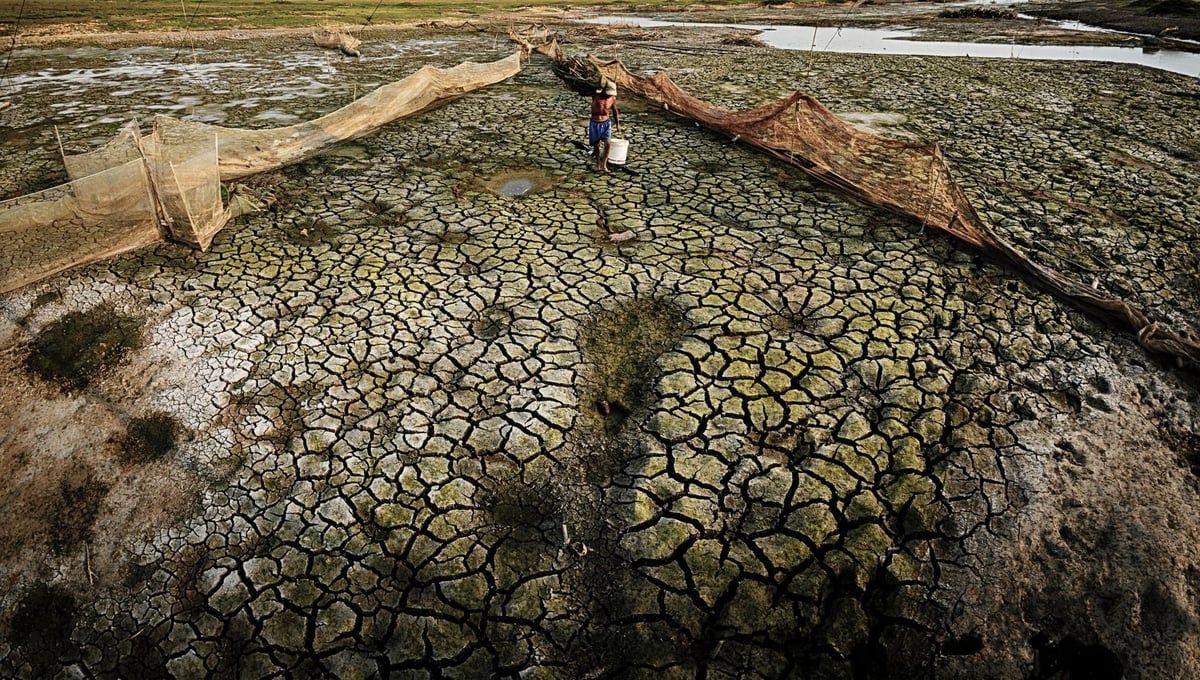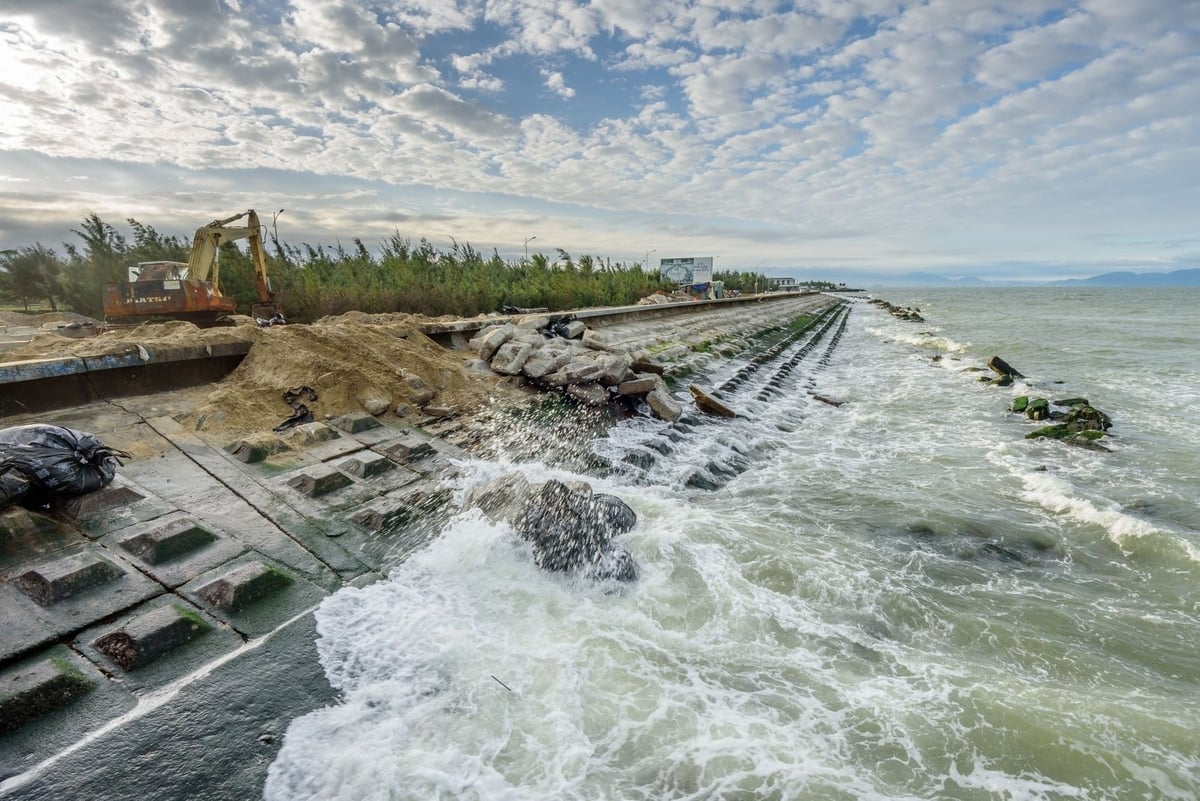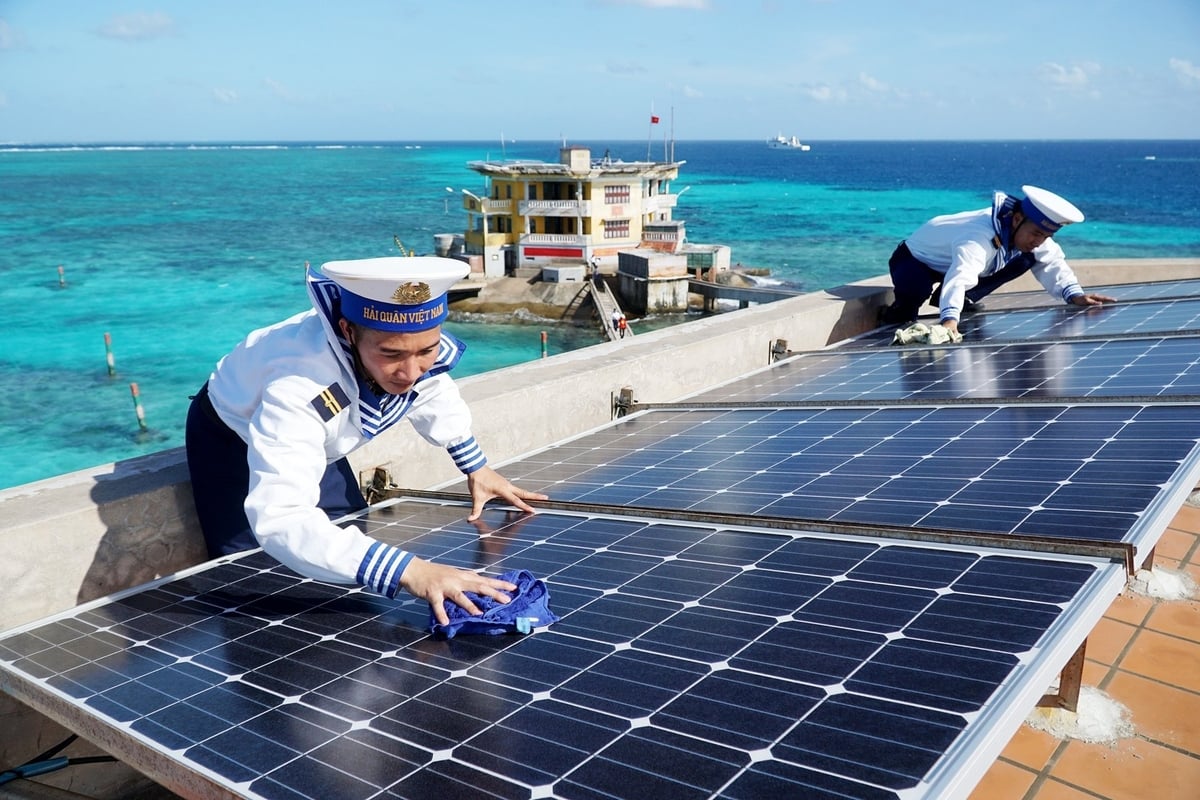
Global warming makes Viet Nam highly vulnerable
A global temperature rise of 1.5°C above pre-industrial levels is considered the Earth’s “red line,” as cascading impacts could render many natural systems irrecoverable.
The Intergovernmental Panel on Climate Change (IPCC) has assessed Viet Nam as one of the countries most vulnerable to severe impacts. Climate change and sea-level rise scenarios published by the Ministry of Natural Resources and Environment (now the Ministry of Agriculture and Environment) in 2009, 2012, 2016, and 2022 all indicate that the intensity and frequency of many types of natural disasters are accelerating in the 21st century. Most visibly, the Vietnamese population has repeatedly faced record-breaking heat, heavy rainfall, powerful storms, floods, salinity intrusion, and droughts in recent years.
According to Professor Tran Thuc, President of the Viet Nam Meteorological and Hydrological Society, under the highest-risk scenario, if sea levels rise by 100 cm by the end of the century, Viet Nam would face severe impacts: 13.2% of the Red River Delta, 1.53% of the central coastal areas, 17.15% of Ho Chi Minh City, and 47.29% of the Mekong Delta could be submerged. The Van Don, Con Dao, and Phu Quoc archipelagos would also be at risk of deep flooding.
With a 1°C temperature increase, losses and damages from climate change would amount to around 1.8% of GDP. If temperatures rise by 1.5°C, this figure could reach 4.5% of GDP. Estimated economic losses could total approximately USD 4.3 billion over the next ten years if Viet Nam does not act in time.
Another, more insidious impact is the gradual shift of the current climate into a new state. This process occurs over decades to centuries and can only be assessed with sufficiently long meteorological and hydrological observation data. The consequences could be severe: ecosystems may be degraded or lost, biodiversity declines, fertile agricultural lands gradually disappear, leaving a harsher living environment for future generations.
Policies paving the way for action

In 2025, Viet Nam submitted the updated National Climate Change Adaptation Plan for 2021-2030, with a vision to 2050, to the Secretariat of the United Nations Framework Convention on Climate Change (UNFCCC). The report highlights that over the past decade, Viet Nam has developed a fairly comprehensive policy framework for proactive adaptation. From the central to local levels, guidelines, resolutions, laws, strategies, and action programs have been continuously issued, demonstrating strong political commitment and an increasingly substantive approach.
As early as 2013, Resolution No. 24-NQ/TW of the Party Central Committee laid the foundation for “proactively responding to climate change, strengthening resource management, and protecting the environment.” This was followed by Resolution No. 36-NQ/TW (2018) on sustainable marine economic development and the Politburo’s Conclusions No. 56-KL/TW (2019) and 81-KL/TW (2024), which expanded the scope of governance, emphasizing the integration of climate change adaptation into all development strategies as a core and long-term task.
Climate change adaptation has been incorporated into numerous legal documents, especially laws directly related to affected sectors such as Disaster Prevention and Control, Water Resources, Meteorology and Hydrology, Forestry, Fisheries, Crop Production, Livestock, and Environmental Protection. Notably, Resolution 120/NQ-CP on sustainable development of the Mekong Delta with climate adaptation is considered a milestone, reflecting a shift in mindset from “coping” to “proactive adaptation.”
Building on this foundation, the National Climate Change Adaptation Plan takes a further step by specifying medium- and long-term adaptation needs across all sectors, along with solutions to address them. These measures may include coastal protection, irrigation improvements, early warning systems for natural disasters, and changes in cultivation models. The ultimate goal is to reduce the vulnerability of people, natural systems, and socio-economic structures to the impacts of climate change.
Proactive adaptation

A highlight of Viet Nam’s adaptation achievements is its modern meteorological and hydrological monitoring and early warning system, which increasingly meets the demands for disaster forecasting and early alerts. Viet Nam’s storm forecasts are nearly on par with regional standards, providing up to five days’ advance warning. Cold spells, severe frost, and widespread heatwaves can be predicted 2-3 days in advance with over 80% reliability. Systems for landslide, tsunami, and flash flood warnings have also been expanded, contributing significantly to efforts to reduce human and property losses from natural disasters.
To date, most localities have issued climate change action plans and actively integrated climate considerations into development planning. Areas frequently affected by natural disasters have implemented development plans, construction standards, and key, urgent disaster-prevention measures. Disaster prevention and mitigation organizational structures have been strengthened at all levels. Irrigation systems help ensure water security amid increasing droughts and salinity intrusion. Compared with 1998–2007, material losses from natural disasters in 2008-2017 fell by nearly 30%, while fatalities and missing persons decreased by 38%. This clearly demonstrates the effectiveness of a proactive disaster-prevention strategy, with the “four-on-the-spot” principle consistently implemented down to the commune and village levels.
Agriculture, one of the sectors most heavily affected by climate change, has maintained stability and flexibility. Average rice yields increased from 5.3 tons/ha in 2010 to over 6.1 tons/ha in 2023. Irrigation systems have been developed with multi-purpose objectives, supporting irrigation, drought and salinity prevention, and aquaculture.
Alongside infrastructure investment, Viet Nam has placed special emphasis on building community capacity. Numerous programs have been implemented to raise awareness and manage disaster risks through community-based approaches, as well as to promote climate-resilient livelihood models. In the Mekong Delta, over 200,000 hectares of low-yield rice land have been converted to aquaculture or fruit cultivation, boosting income and reducing risk.
Forest coverage reached 42.02% in 2023 and has remained stable. Programs such as planting one billion trees, protecting coastal forests, and improving forest quality have been vigorously promoted. Mangrove forests alone have achieved over 60% of the targets set in the Coastal Forest Development Plan for Climate Change Adaptation. Internationally, Viet Nam is recognized as a bright spot for biodiversity, with notable achievements in species and genetic conservation and in establishing a network of protected areas.
According to Mr. Ramla Khalidi, UNDP Resident Representative in Viet Nam, those most affected by climate change often hold the key to resilience, providing unique insights into locally appropriate adaptation solutions. Therefore, strengthening resilience through scaling up climate-adaptive livelihoods, comprehensive social protection systems, and investment in human capital must remain central to Viet Nam’s development path. In fact, Viet Nam can not only safeguard its achievements but also become a model in the region and globally, moving toward a greener and more inclusive future.
Strengthening “No-regret” investment finance

In reality, global efforts to reduce greenhouse gas emissions and keep temperature rise within 1.5°C remain far from sufficient. Consequently, climate change will continue to evolve in increasingly extreme and unpredictable ways. In this context, Viet Nam recognizes adaptation as a long-term strategic task that must be pursued proactively, comprehensively, and effectively. The focus in the coming period is to implement in a coordinated manner the goals and priority solutions set out in the updated National Climate Change Adaptation Plan for 2021-2030, with a vision to 2050.
Financial needs for climate change adaptation by 2030 are estimated to exceed 3–5% of 2020 GDP. Specifically, the period 2021-2030 requires approximately USD 55-92 billion (in 2020 net present value terms, with a 10% discount rate).
Even if Viet Nam maintains annual spending of 1.5% of GDP on adaptation, an additional USD 2.75-6.42 billion per year will still be needed, equivalent to USD 27.5-64.2 billion for the 2021-2030 period. This highlights the significant challenge of securing resources, requiring the collective effort of society and expanded international cooperation.
According to the United Nations, investment in adaptation is a “no-regret” investment, especially compared with the enormous costs of repairing damages caused by climate change. Strengthening resilience and reducing vulnerability not only improves the ability to cope with extreme natural disasters today but also helps safeguard a sustainable future for generations to come.



